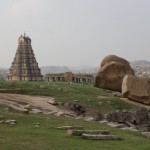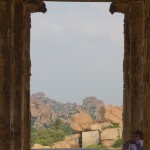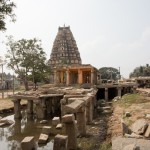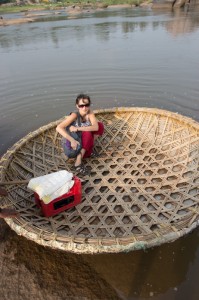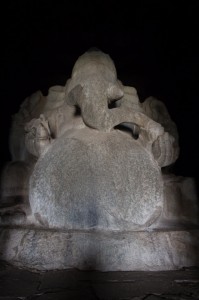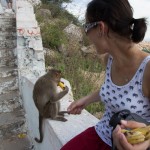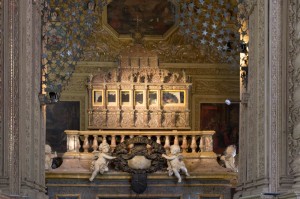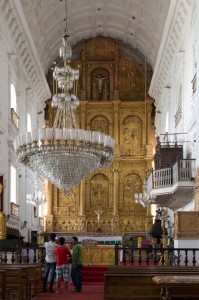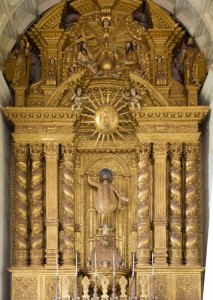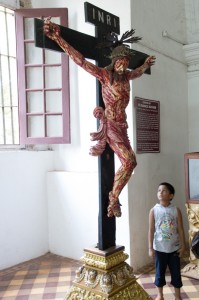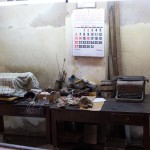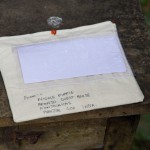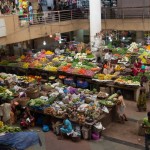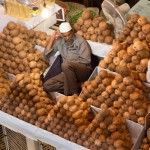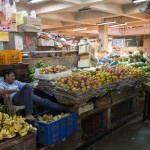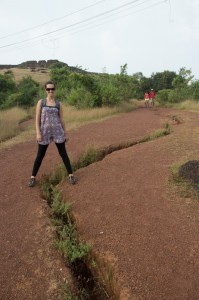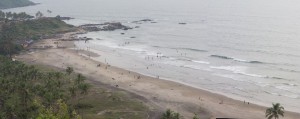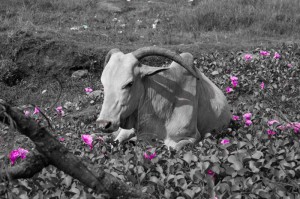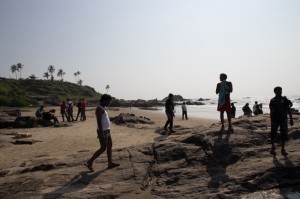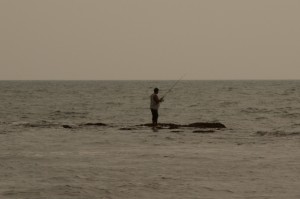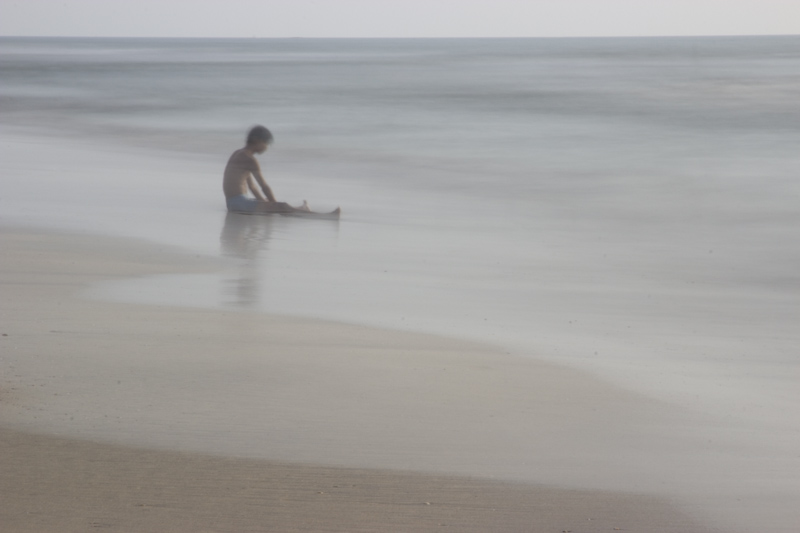Hampi is just insane!
The landscape is like something out of an original series Star Trek, with huge boulders strewn across a rocky landscape. In some places they lay piled up atop each other like giant rock monsters that dominate the surroundings.
Between the rocky hills sits a river valley with a small settlement perched on its banks. The village is littered with temples which rise majestically into the sky. In the centre of the village sits a bazaar where local townsfolk stand aside Hindu holy men, and monkeys charge down alleyways, leaping over the usual complement of stray dogs and kittens.
On the north side of the river, a collection of guesthouses aimed at the tourists enjoy a slightly more relaxed approach to the dogmatic rules which govern the village itself.
We decided to stay on the north side of the river and found that the only way across is by motor boat or coracle, the latter of which is a small circular boat that is propelled through the whirlpools and currents of the river by a man with a single paddle.
Our first venture out took us up a hill to the north of the bazaar. Sat atop was a small temple with columns hewn from rough rock. Behind the columns was an entrance leading into a dark room. Inching forward into the darkness we were amazed to see the massive shape of Ganesh the elephant god appear out of the darkness in front of us. The idol had been carved from a single large boulder and the temple erected around it.
Today I went to hire another scooter but could only find bikes available. I chose the least powerful one and Nicole and I set out to what is colloquially called the ‘Monkey Temple’.
The temple was raised to worship Hanuman, a child born to a woman called Anjana.
Anjana was originally cursed to be part human, part monkey. Legend has it that the only way this curse could be lifted was for her to have a baby. Anjana prayed to Shiva till he saw fit to give her a child which in turn lifted the curse. This half-god child was called Hanuman and retained the features of an ape. Hanuman later went on to use his god-strength to leap across the ocean and rescue a lady who had been kidnapped.
The road to the temple was pitted and steep in places. It soon became apparent that the diminutive motorcycle had no power to it and we slowed to a crawl climbing the hill. I found that I could scoot the machine forward with a few pushes of my leg keeping it going on the more difficult climbs. Eventually though the machine got us to the base of the cliff and we parked up and surveyed the climb ahead of us.
Nicole purchased some bananas from a vendor who had ingeniously set up shop at the bottom of the cliff, advertising his goods as essential for keeping the monkeys in ‘good spirits’. With bananas in hand we set off up the stairway which was rumoured to have anywhere between 580 and 780 steps.
As we began our climb simian shouts went up as we were spotted by the scouts and soon we were surrounded by monkeys of all shapes and sizes. They danced around reaching out with grubby paws. One particularly mischievous one tugged at Nicole’s bag and she shooed him away. With our offerings depleted, they soon ran on to the next group coming up the stairs behind us. Suddenly there was a shout and a monkey sped past with an entire bag of fruit that he had managed to tear from their grasp. He vaulted over the wall and sat astride a high rock stuffing his face as his victims looked on in horror.
Eventually we made it to the top, just as our legs were beginning to give up in the brutal heat of the early afternoon. There in front of us stood a white tiled temple with the sounds of prayers singing out from within.
Nicole and I removed our shoes and entered the temple where a young devotee painted a red streak down our foreheads. I asked if I could photograph inside, but my request was declined. I settled instead on taking an audio recording of the prayers which you can hear below.
Audio Player
After some time sat in the temple, recovering from the arduous climb and relaxing to the monotony of the songs, we made our way back outside to take some panoramic shots of the stunning scenery.
Finally reinvigorated, we began our march back down to our bike and a cold drink waiting at the bottom.
The next stop was a tranquil lake just a few miles away. They lake had a small peninsula running into it. Covered in large boulders we made our way onto it and relaxed in the shade of one of the larger rocks, enjoying for a while the silence and peace that surrounded us with the still waters.
Finally we returned to the huts, tired from our journey we resolved to get an early night in order to make the most of the large festival Diwali that begins tomorrow.
